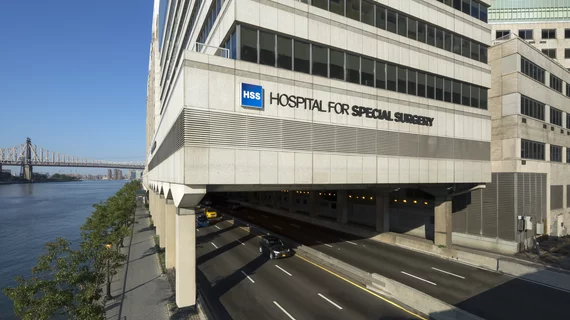HSS is 1st in US to roll out integrated clinical diagnostics in pathology
Hospital for Special Surgery in New York today became the first U.S. hospital to implement integrated clinical diagnostics with the launch of a digital pathology solution that unites pathology images and reports with electronic medical record data and radiology images across the enterprise.
To make this happen, HSS’s clinical and IT teams piloted the integration of their Leica high-resolution microscope slide scanner, the Pathology Laboratory Information System (Epic/Beaker) and enterprise image management via the Sectra Digital Pathology Solution. Now a clinical product, other healthcare systems can utilize the same integration path.
Allowing surgeons, radiologists, and other physicians to view high-resolution digital images of scanned microscope slides can significantly improve patient care, noted Thomas W. Bauer, MD, PhD, pathologist-in-chief at HSS, who led the clinical side of the digital pathology initiative. “Access to digital pathology images, side by side with radiology images on the same enterprise-wide PACS, enables correlation between different types of studies and promotes efficient discussion about complicated cases.”
Fully implemented, the benefits of digital pathology also include bolstering pathologist efficiency and reach, allowing them to work from home with full access to digital images (thanks to an FDA emergency use authorization now in effect), cutting patient wait times, simplifying physician consultations, multidisciplinary team meetings and opening up teaching opportunities.
Bauer’s colleague on the IT side stressed the need for clinical-IT partnership. “Utilizing digital pathology for primary diagnosis needs to be a shared passion of pathology and IT,” said Inderpal Kohli, assistant VP, Clinical Applications & Training who leads the IT project team and first presented this vision to HSS leadership back in 2017.
As he described, the solution offers HSS clinicians a familiar user interface and workflows, enabling ease of use and broader adoption across the enterprise. “There’s a distinct benefit of using one infrastructure to save and access images across all specialties with enterprise imaging,” he said. “For patients with multiple surgeries and multiple pathology cases, physicians can see the progression or the difference. It’s a time saver and offers better efficiency so the physicians appreciate that.”
The HSS team noted that the project was given a boost thanks to a trilogy of events: the April FDA clearance of the Sectra system and an FDA emergency use authorization that allowed physicians to read from anywhere on the imaging platform—which brought about HSS’s quick approval of the purchase of a new slide scanner. “That was the final piece to go forward with integrated diagnostics,” Kohli said. “In terms of timing, we’re right where we wanted to be.”

